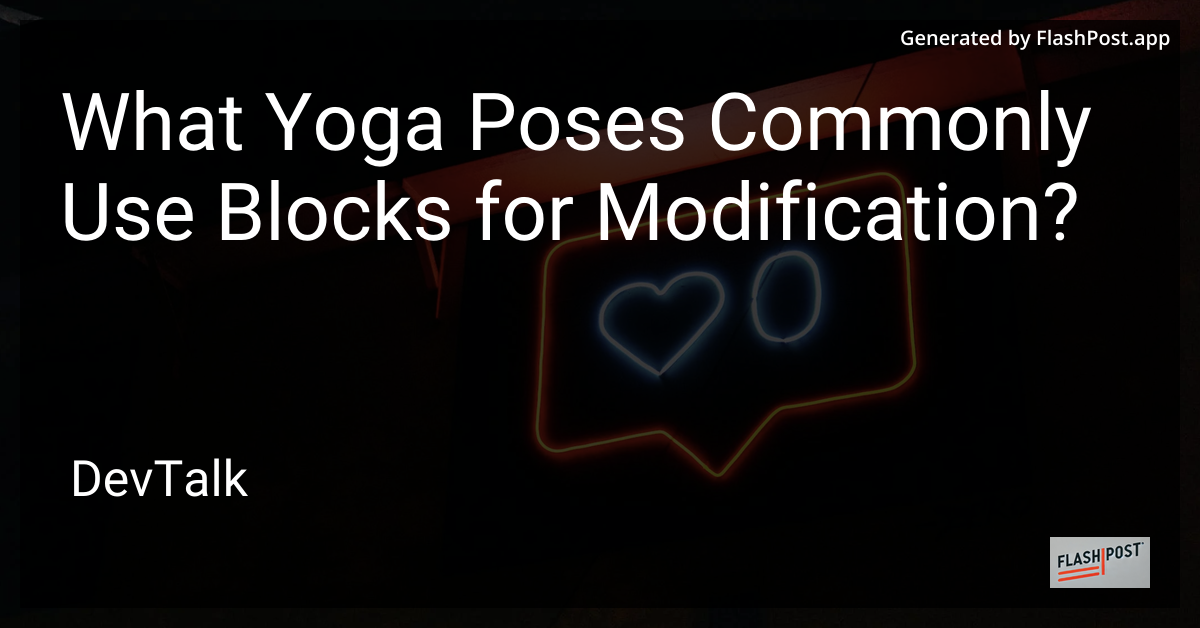What Yoga Poses Commonly Use Blocks for Modification?

What Yoga Poses Commonly Use Blocks for Modification?
Yoga blocks are versatile tools that can significantly enhance your practice by providing support, encouraging proper alignment, and offering greater comfort.
Whether you're a seasoned yogi or a beginner, understanding which yoga poses commonly use blocks for modification can transform your sessions. Here are some popular poses that frequently incorporate blocks.
1. Triangle Pose (Trikonasana)
Triangle Pose is a staple in many yoga practices, but it can be challenging to achieve the desired alignment without assistance. Using a block can help maintain balance and deepen the stretch. Place a block on the floor beneath your lower hand to support your body and encourage a straighter spine.
2. Half Moon Pose (Ardha Chandrasana)
Half Moon Pose combines balance, strength, and flexibility. To safely work on balance and form, place a block underneath your lower hand. This adjustment offers stability and enables you to open your chest more effectively without compromising balance.
3. Forward Fold (Uttanasana)
For those with tight hamstrings or lower back issues, a Forward Fold can be comfortably modified with a block. Using blocks under your hands can reduce strain, allowing you to maintain the integrity of the fold while gradually increasing flexibility.
4. Supported Bridge Pose (Setu Bandhasana)
Bridge Pose can be enhanced with a block to add a restorative element. Placing a block under your sacrum during the supported version can relieve tension and provide gentle support to the lower back.
5. Seated Forward Bend (Paschimottanasana)
Seated Forward Bend can be tough on the hamstrings and lower back. By placing a block underneath your knees or a block under your hands, you can ease the strain and slowly improve flexibility over time.
6. Pigeon Pose (Eka Pada Rajakapotasana)
Pigeon Pose is excellent for opening the hips, but it can be intense. A block under the hip of the front leg can lessen the intensity and provide a more accessible stretch while maintaining alignment.
7. Reclining Bound Angle Pose (Supta Baddha Konasana)
Using blocks to support your thighs in this pose can allow you to experience a relaxing hip opener without straining. It is also often practiced with a bolster pillow for additional support, enhancing relaxation and stress relief.
Benefits of Using Yoga Blocks
Incorporating blocks into your practice has numerous benefits:
- Improved Alignment: Blocks help in maintaining proper alignment, crucial for both beginners and advanced practitioners.
- Increased Flexibility: They offer gradual adjustments, which can help in safely increasing flexibility.
- Enhanced Stability: Blocks provide the necessary support for balancing poses, allowing you to focus on breath and posture.
- Reduced Strain: Particularly beneficial in avoiding undue pressure on joints and muscles, blocks make poses more accessible for all levels.
It's worth mentioning that blocks are just one of many ways to modify and support your practice. Bolster pillows, as described in this article, and attention to proper equipment like yoga mats can also play important roles in enhancing your experience. If you're interested in other health benefits of yoga practice, like supporting digestive health, consider reading about yoga poses that help with bowel movements.
Blocks are a fantastic addition to personalize your yoga practice. They guide practitioners toward reaching their potential safely and comfortably, encouraging consistency and growth over time.